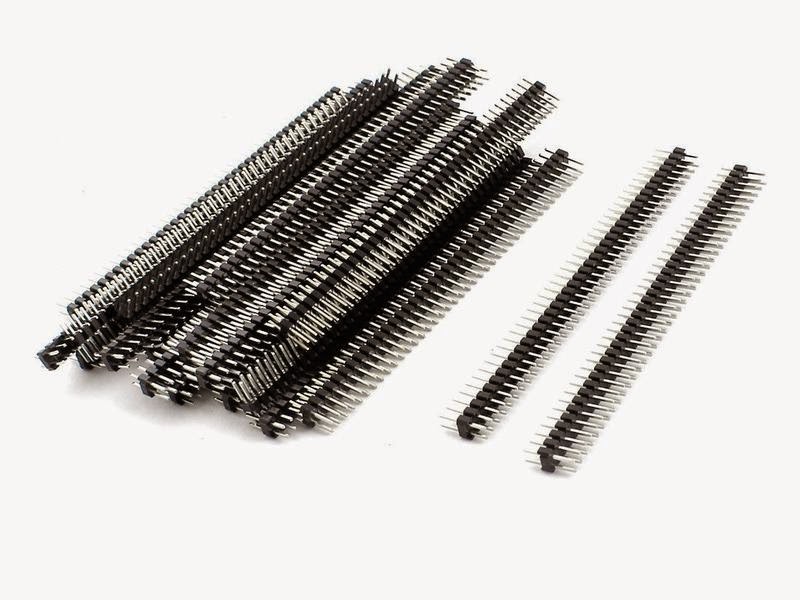After I finished my major track repair I was routinely checking my locomotive fleet to make sure everything would work without problems. I found problems but not what I expected. The track repair worked great but I found several locomotives that developed problems sitting on my display shelves. One problem was with a piece of MOW equipment, my snow blower. The Proto F7B Snail had developed cracked axle gears in storage so it was overhaul time.
After replacing the Proto axle gears with Athearn gears it was happy again but in the process I discovered it had Deans connectors between the Athearn Snow Blower and the Proto Snail. Well that is something that needs correcting. Years ago when I couldn't find micro connectors I used Deans but now I have a parts drawer full of micro connectors.
I now use micro connectors on all of my model railroad equipment, the key to micro connectors was finding them. They are easily found on eBay as 2.54mm 40 Pin Connector Strips for single row and Dual Row 2.54mm 40 Pin Connector Strips for making the 8 Pin NMRA DCC connectors.
Single Row 2.54mm 40 Pin Connector Strips
Double Row 2.54mm 40 Pin Male Header Strips
They cut easily using an Atlas #400 Super Saw.
So now on to replacing the Deans connectors.
The picture above shows my Proto F7B Snail, my somewhat kitbashed Athearn Snow Blower and an assortment of micro connector strips.
The Athearn Snow Blower out of it's Blue Box is too long for an SP snow blower, I remove two riveted sections making it 42' long. I also added a gear motor to turn the snow blade. The gear motor and warm white LED headlight are connected to a DCC decoder in the Snail with a three pin connector.
The picture above shows the micro connector strips with some cut sections ready for use. The small 8 pin connector on the left is a Printed Circuit board header the others are Female on one side and Male on the other side. The size of the squares on the cutting mat are ½".
The pictures below show the connectors in the Snail.
Using a connector between the motor and rails also makes makes it easier to work on the motor using a connectorized cable from a bench power supply.
With connectors a bench power supply can plug directly into the motor for testing and lubing.
I used a single pin connector to connect the wires to the snowblade gear motor, by reversing the connectors the direction of blade can be reversed.
The 2 pin connector on the right is for the snow blower headlight.
The 3 pin male connector on the bottom of the snow blower connects to a female pigtail from the Snail DCC decoder, headlight is standard headlight on off and Function 3 controls the snow blade motor.
By using the micro connectors everything is super simple to work on and especially helpful at the low cost when buying in bulk off eBay, a typical single row 40 pin strip cost less than a dollar and a dual row 80 pin strip is only a few pennies more. One 80 pin strip will make 10 NMRA DCC connectors for less than 15¢ each.

























